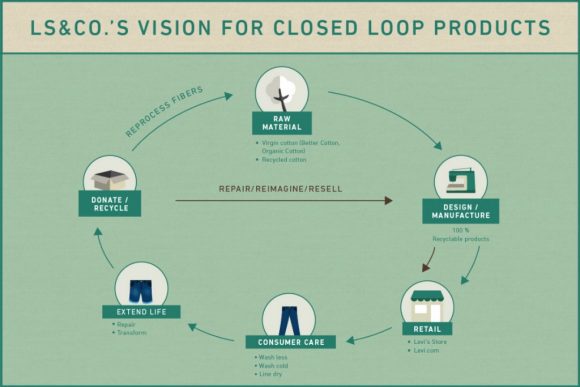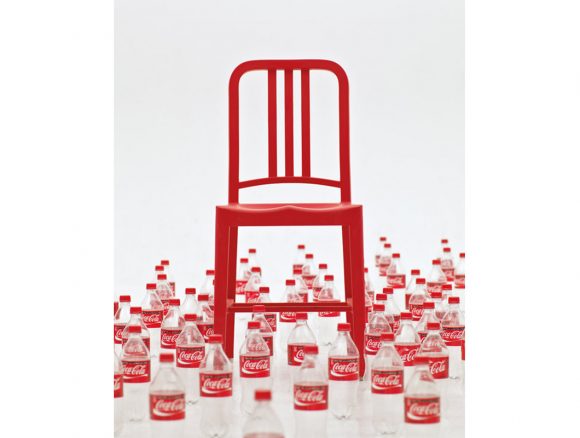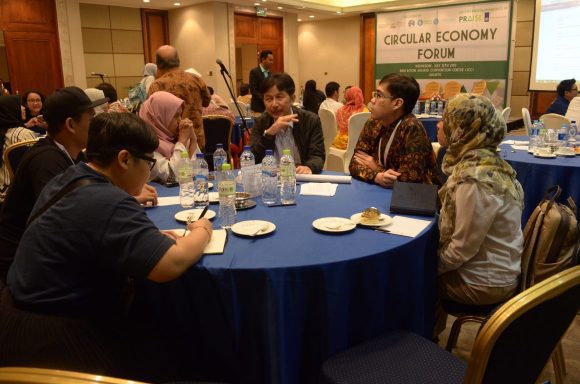Supporting Circular Economy Through Responsible Waste Management with Waste4Change
The circular economy aims to keep resources in a closed cycle. As we already know, the natural system already adapts to a circular system. Soil nutrients and solar energy grow plants, plant feeds animals, the animal dies, decompose, and become soil nutrients.

In that perfect world, no waste is generated. However, the linear economy introduced us to the ‘throw-away’ culture. We extract resources, manufacture products, and eventually dispose of them, without thinking too much about how much resources are wasted in landfills.
Know More About Circular Economy
As an illustration, electronic products constantly evolve in this digital era, and consumers are always eager for new. This won’t be a problem if electronic items are durable, the broken ones are fixed, and the unfixable is recycled.
However, this is often not the case. E-waste is an emerging issue as it creates landfills of electronics that contain toxic yet valuable materials (Gupta, 2012). To solve this problem, a circular economy is the answer.
We often neglect the fact that the products we throw away should be returned to resources as capital for economic gain.
Finland’s Independence Celebration Fund (FICF) and McKinsey (2014) estimated that a circular economy could benefit the global economy annually by 1000 billion US dollars.
In Indonesia, it is estimated that 28.1 trillion rupiahs are lost due to an ineffective waste management system (Waste4Change, 2015).
Three main players in the Circular Economy
Producer



The circular economy begins with design, hence with the producers. Products that are durable, reusable, repairable, compostable, and recyclable are designed that way. Without the right design, products and packaging will most likely end up in landfills.
Consumers



The next stage of the flow is controlled by the consumers. Consumers are the ones who decide whether sustainably designed products should be in, whether products are maintained well, whether broken products are repaired instead of thrown away, and whether products are discarded responsibly.
As a consumer of the circular economy, all those decisions should be made based on the priority of keeping resources inside the closed cycle. Simple actions could make real differences in the economy.
Buy fewer products, segregate waste and implement responsible waste management to be part of the circular economy.
Recycling Sector



At the very end of the life of a product, the recycling and composting sector have an important role in providing waste management services. Innovations are necessary for this sector as the majority of waste produced is still not recycled.
This is particularly a major issue for low-income countries, where only 4% of their waste is recycled (World Bank) due to insufficient responsible waste management facilities. Waste4Change aims to be the solution to this problem by providing waste management services to Indonesia.
One of the main program by Waste4Change is the Zero Waste to Landfill (ZWTL) program, where 100% of the client’s waste are diverted from landfill.
The difference between circular economy and linear economy
The difference between a circular and a linear economy lies within the fate of products at the end of their lives. In a linear economy, products are destined to be disposed of.
Therefore, producers constantly extract new resources for producing new goods, assuming those resources are infinite. By neglecting the value of disposed of products, the wealth of a country is depleted.
On the contrary, a circular economy takes into account the value of resources from the design phase. As many materials that are used are returned into raw materials for new production.
This, however, is still an ongoing process in Indonesia. According to Sustainable Waste Indonesia (SWI), out of the 65 million tonnes of waste produced in Indonesia each day, 69% ends in landfills or Tempat Pemrosesan Akhir (TPA).
Furthermore, around 20% of this waste is neglected in the ecosystem, and only 7% is recycled (CNN Indonesia, 2018).
Through the Indonesia Bersih Sampah (Indonesia clean from waste) 2025 program, the Indonesian government is aiming to reduce waste generation by 30% and to manage at least 70% of generated waste in Indonesia. This program will hopefully support Indonesia in achieving a circular economy.
Example of big brands leading their way towards a circular economy
The circular economy is not just a written theory. Some leading brands, from fashion, and culinary, to electronics already implement this concept into their businesses.



(Credit: Levi Strauss & Co.)
Levi Strauss & Co., the company behind the invention of blue jeans, has been prioritizing sustainability for three decades. The company has developed several strategies, including the establishment of the Waste<Less™ collection, where the garments are made out of 20% recycled plastic bottles.
They have also established a system for consumers to return their old jeans to be incorporated with raw materials for producing new garments.



(Credit: Emeco)
Considered ambitious, Coca-Cola is aiming to make all of its packaging 100% recyclable by 2025 and to create packaging that is comprised of 50% recycled materials by 2030 as part of its ‘World Without Waste’ packaging vision.
Furthermore, Coca-Cola has also been collaborating with Emeco, a design company specializing in chairs, since 2010 to recycle Coca-Cola bottles into high-quality chairs. After five years, the program was launched, and 15 million bottles were diverted from landfills.



(Credit: Dell)
Dell believes that “wasted resources are wasted money.” One of Dell’s incentives in transitioning to a circular economy is to establish closed-loop plastic recycling. Dell uses recycled plastics that are recovered from old products to be incorporated into new products.
Not only does using recycled plastic reduce the environmental footprint of the product, this also reduces cost. A study shows that this effort has yielded significant natural capital net benefit that is worth $1.3 million annually.
In the culinary industry, Silo Restaurants in the UK is a great example of their implementation of a circular economy. All of their freshes produce are carefully sourced from farmers with a similar views on sustainability.
They carefully transport and process their food to minimize waste, and if food scraps are produced, they directly go into their composting facility, that could generate 60 kg of compost in 24 hours.
Their commitment doesn’t end in the way they treat food. The furniture in their restaurant is comprised of upcycled materials. Their tables used to be industrial floor tiles, plates used to be plastic bags, and jam jars for glasses.
Lastly, Energizer took action to find solutions for batteries that are known to be difficult to recycle.
They’ve established the Energizer Recharge batteries, which are rechargeable so that consumers do not have to constantly buy and dispose of batteries. Another benefit of this product is that it contains recycled batteries.
Indonesia Circular Economy Forum (ICEF): Reshaping Indonesia’s Economy
Being the world’s 16th largest economy (Investopedia), Indonesia should begin their shift to circular economy. The extensive economic growth means there will be so much more products and services to be delivered by the population.
If this isn’t monitored and managed well, resource depletion and excessive waste production will become the result of this situation.



(Credit: Waste4Change)
The first Circular Economy Forum (CEF) in 2017 was organized by Waste4Change with Greeneration Foundation, PT Napindo Media Ashatama, Kamar Dagang Industri (KADIN), Ikatan Alumni Teknik Lingkungan Institut Teknologi Bandung (IATL ITB), Kedutaan Besar Kerajaan Belanda, dan Packaging Recycling Alliance for Sustainable Indonesia (PRAISE) marked a positive start towards a circular economy in Indonesia.
The forum was held at JCC Senayan, Jakarta, on the 12th of July 2017 and became a platform for stakeholders of the Indonesian economy, including the government, businesses, institutions, and organizations, to discuss Indonesia’s potential to achieve a circular economy.
Two main topics are discussed in CEF 2017, which are ‘Post-consumer Packaging Strategy towards Circular Economy’ and ‘Circular by Design – Innovation for Green Product’, focusing on the role of product design in the circular economy.



(Credit: Waste4Change)
The second forum, Circular Economy Forum (CEF) 2018, was held on June 28-30th at Grand City Convex Surabaya, adapting the theme “Redefining Waste Management: from Trash to Resources Management.”
With up to 500 participants, CEF 2018 resulted in valuable discussion outcomes, covering Indonesia’s vision on waste management, law enforcement, funding opportunities, community empowerment, and several other issues that are crucial in achieving a circular economy.
The summary report of the Circular Economy Forum 2018 can be downloaded through the following link: https://bit.ly/2REygEP.
For the third time, Waste4Change will be organizing the upcoming forum, now titled the Indonesia Circular Economy Forum (ICEF), in 2019.
The theme of this year’s ICEF is ‘Redefining Waste Management’ with the objectives of encouraging commitment between stakeholders in implementing a circular economy, promoting collaborative learning between decision-makers to improve knowledge of the different sectors, and providing an opportunity for audiences to collaborate and connect to share ideas on circular economy.
Waste4Change’s is committed to supporting the shift toward a circular economy in Indonesia. Waste4Change provides services that conform with the circular economy principle, which is to restore the value of unwanted materials, both organic and inorganic.
All of Waste4Change’s services aim to divert waste from landfills, hence diverting valuable resources from being wasted.
As mentioned before, Waste4Change offers the Zero-Waste to Landfill (ZWTL) program that ensures the waste produced by clients are 100% diverted from landfills.
Just like the economy, Waste4Change required the consumers to cooperate by segregating waste based on their types for efficient recycling.
Furthermore, Waste4Change also supports the Indonesia Bersih Sampah Program (Indonesia free from waste 2025) by the Government, aiming to reduce waste generation and increase the proportion of waste that is recycled.
In need of a responsible and segregated waste collection service? Contact us to see which service suit your need.
Read the article in the Indonesian version here.



